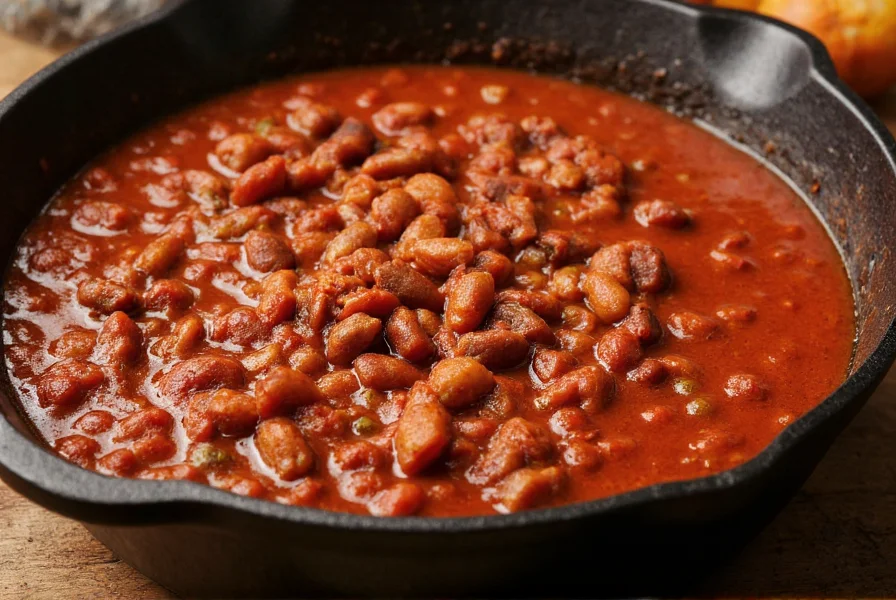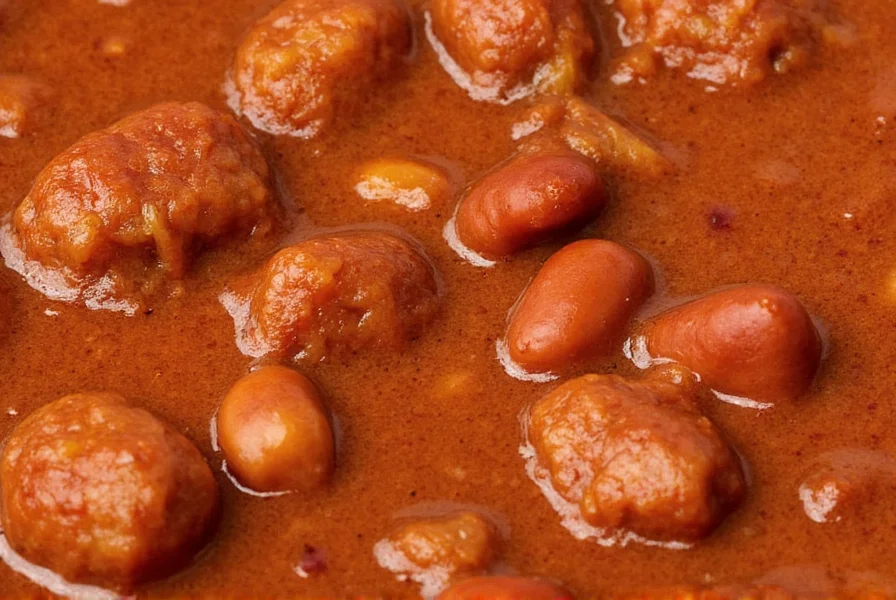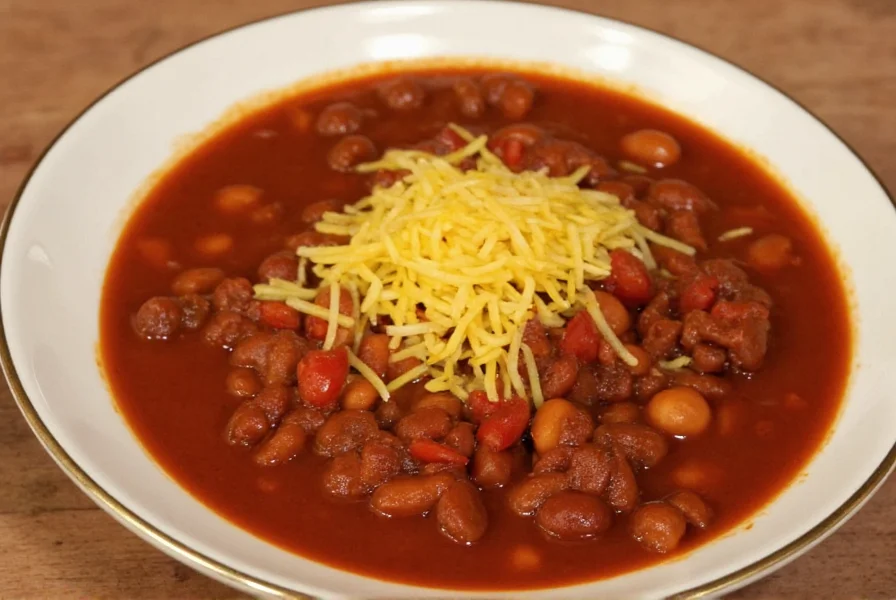The True Essence of Texas Chili: A Bean-Free Tradition
When you search for a texas chili recipe no beans, you're seeking authenticity. Traditional Texas chili, often called "chili con carne" (chili with meat), has never included beans in its original form. This culinary tradition dates back to the late 1800s when chili queens of San Antonio served this simple yet flavorful dish to cowboys and railroad workers.
Why Beans Don't Belong in Authentic Texas Chili
The exclusion of beans isn't arbitrary—it's deeply rooted in Texas chili culture. According to the Texas State Legislature, which designated chili as the official dish of Texas in 1977, authentic chili con carne must contain "no beans or spaghetti." Competitive chili organizations like the International Chili Society strictly prohibit beans in their championship recipes.
Beans fundamentally alter the texture and flavor profile that defines true Texas chili. The dish's essence lies in the slow melding of meat, dried chilies, and spices into a rich, complex stew where the meat becomes the star. Adding beans introduces starch that competes with the meat's natural gelatin and alters the dish's traditional consistency.

Essential Ingredients for Authentic Texas Chili
Creating an authentic traditional texas chili recipe without beans requires careful ingredient selection. Here's what you need:
| Ingredient | Why It Matters | Quality Tips |
|---|---|---|
| Beef chuck (3 lbs) | High fat content renders during cooking for rich flavor | Cut into 1/2-inch cubes; avoid pre-ground beef |
| Dried ancho chilies (6) | Provides deep, fruity base flavor | Toast lightly before rehydrating |
| Dried guajillo chilies (4) | Adds bright, tangy notes | Remove seeds for less heat |
| Dried chipotle chilies (2) | Contributes smoky depth | Use sparingly for authentic heat level |
| Beef tallow or lard (2 tbsp) | Traditional cooking fat for authentic flavor | Never substitute with vegetable oil |
Step-by-Step Texas Chili Recipe Without Beans
Follow these steps for an authentic homemade texas chili recipe no beans that honors tradition while delivering exceptional flavor:
Preparation (30 minutes)
- Toast dried chilies in a dry skillet over medium heat for 1-2 minutes until fragrant but not burnt
- Place toasted chilies in a bowl, cover with boiling water, and soak for 20 minutes
- While chilies soak, cut beef chuck into 1/2-inch cubes, trimming excess fat
- Blend soaked chilies with 1 cup soaking liquid until smooth
Cooking Process (3-4 hours)
- Heat beef tallow in a heavy pot over medium-high heat
- Sear meat in batches until well-browned (do not crowd the pot)
- Remove meat and sauté diced onions until translucent
- Return meat to pot with chili puree, 2 cups beef broth, garlic, cumin, and oregano
- Bring to a gentle simmer, then reduce heat to low
- Cover and cook for 3-4 hours until meat is fork-tender and sauce has thickened
- Skim excess fat from surface before serving

Common Mistakes to Avoid in Texas Chili Preparation
Even experienced cooks make these errors when attempting a real texas chili recipe no beans:
- Using ground beef instead of cubed chuck - Authentic Texas chili uses cubed meat that slowly breaks down during cooking
- Adding tomatoes - While some modern recipes include tomatoes, traditional Texas chili does not
- Over-spicing - Authentic chili relies on chili peppers themselves for heat, not excessive cayenne or other hot spices
- Stirring too frequently - Texas chili should simmer undisturbed to develop proper texture
- Rushing the cooking process - Proper Texas chili requires slow cooking to develop complex flavors
Serving Authentic Texas Chili
Traditionally, Texas chili is served in a bowl with minimal accompaniments to showcase the chili itself. Common traditional toppings include:
- Finely diced white onions
- Freshly grated aged cheddar cheese
- Saltine crackers on the side
- Lime wedges for a touch of acidity
Avoid serving with rice, beans, or Fritos—these are regional variations but not authentic to traditional Texas-style chili.
Storage and Reheating for Optimal Flavor
Authentic Texas chili actually improves in flavor after 24-48 hours as the flavors continue to meld. Store in an airtight container in the refrigerator for up to 5 days or freeze for up to 3 months.
When reheating your best texas chili recipe no beans, do so gently over low heat, adding a small amount of beef broth if needed to restore proper consistency. Never microwave chili, as this damages the delicate texture and flavor balance.
Frequently Asked Questions
Why don't Texans put beans in chili?
Beans have never been part of authentic Texas chili tradition. The dish originated among Mexican vaqueros and Texas cowboys who carried dried meat, chilies, and spices—no beans. Adding beans fundamentally changes the texture and flavor profile that defines true Texas chili, which relies on the slow melding of meat, chilies, and spices alone.
Can I make Texas chili without dried chilies?
While possible, using dried chilies is essential for authentic flavor. Canned or fresh chilies won't provide the same depth. If absolutely necessary, you could use 3 tablespoons of high-quality chili powder (not chili seasoning mix) per pound of meat, but this represents a significant compromise to authenticity. The toasting and rehydrating process of dried chilies creates complex flavors that powder cannot replicate.
How do I thicken Texas chili without beans?
Authentic Texas chili thickens naturally through slow cooking as the meat breaks down and releases collagen. If needed, you can create a 'frito' by frying a small amount of masa harina in beef tallow until golden, then stirring it into the chili. Alternatively, remove some meat, shred it finely, and return it to the pot. Never use flour, cornstarch, or beans as thickeners in authentic Texas chili.
What's the difference between Texas chili and Cincinnati chili?
Texas chili is a thick, meat-forward stew made with beef, dried chilies, and spices only, served as a main dish. Cincinnati chili is a thinner, spiced meat sauce typically served over spaghetti with specific topping combinations ("ways"), containing ingredients like cinnamon, allspice, and sometimes tomato. Texas chili contains no beans, while Cincinnati chili often includes them in certain preparations.
How spicy should authentic Texas chili be?
Authentic Texas chili emphasizes flavor over heat. The spiciness should be noticeable but not overwhelming—chilies contribute complex flavor notes first, heat second. Traditional Texas chili ranges from mild to medium on the heat scale. If you find yourself reaching for milk after every bite, you've likely added too much heat. The focus should be on the rich, deep flavors of the meat and chilies working in harmony.











 浙公网安备
33010002000092号
浙公网安备
33010002000092号 浙B2-20120091-4
浙B2-20120091-4